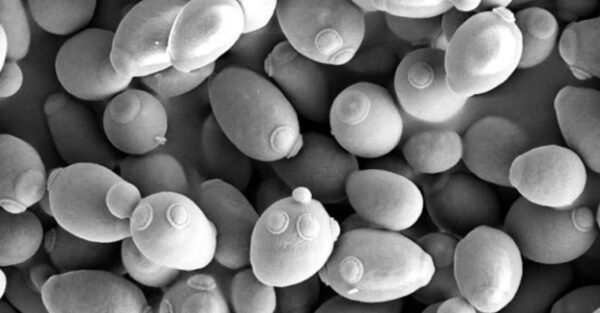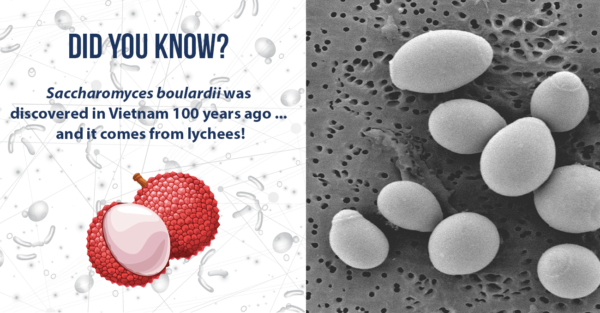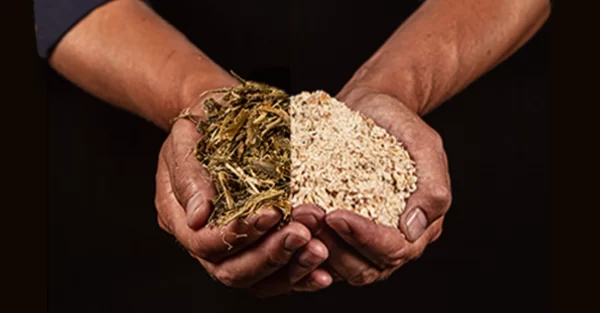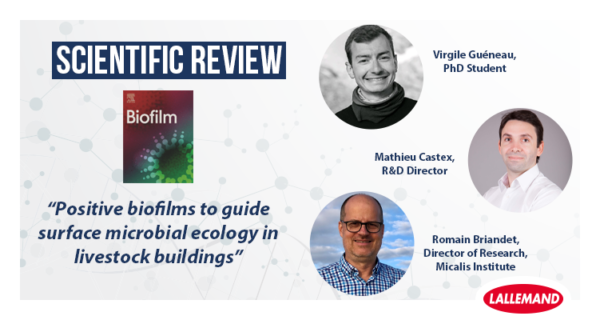Blog | Reading Time 7 minutes
4 questions to Ana Rodiles about shrimp microbiota studies
Ana Rodiles is a Senior Scientist at the Lallemand Monogastric Center of Excellence. She is specialized in fish nutrition and fish microbiota studies and is an expert in bioinformatics and metagenomic research.
- Ana, can you explain us how new molecular techniques help us understand new things about microbiota management, and to answer some practical questions for shrimp farmers?
The new techniques we are using today are based on DNA sequencing. DNA is the fingerprint of life and, in our case, of bacteria. Using such molecular approaches to study bacteria populations give us real and measurable numbers from all the DNA present. For example, it helps us compare the effects of different treatments. This is very important especially if you want to know about all the bacteria, including non-cultivable bacteria. With classic, culture-based techniques, we use specific growth media to target specific populations. We do not have all the medias required to grow all bacteria and, in addition, certain media can lack specificities so that bacteria that are not the ones targeted can still grow. DNA sequencing techniques are complementary to those culture techniques. They use universal primers that enable us to differentiate between the different bacteria that are present in a specific matrix. In any case, DNA sequencing techniques are still a hot topic, as we are discovering very important things that we ignored until now because we were not looking at molecular level.
These metagenomic1 studies can help the shrimp farmer in practice because we are able to identify and discriminate between beneficial and potential pathogenic bacteria. This is very important since even before a disease occurs, we might already have some ‘microbial signatures’ enabling us to predict what is going to happen. Moreover, it is practically the best way to know if using one bioremediation or probiotic product will be beneficial, as we can track them through the DNA. With these techniques, you can study not only the individual taxonomy of each bacteria, but also the general taxonomic composition as a whole, in order to understand how close or far some samples or animals are to each other (this is the Beta diversity2 between 2 samples). We can also have a view of the richness and evenness of the microbiome in terms of numbers (alpha-diversity), which can be a good indicator of a healthy culture. In this sense, if a low diversity is detected, a farmer could predict beforehand a risk of reduction in the pond production, and thus adapt the remediation or bioremediation protocol before it can be problematic for the animal survival and welfare.
-
How can we track probiotics/bioremediation products added in the water and in the shrimp?
We can track if the beneficial bacteria added in the water (bioremediation) and through the feed (probiotic) are there by measuring with DNA sequencing as explained before. In the case of our experiments on hatchery and nursery, we added bacteria from the Bacillus and Pediococcus group, and we could clearly see that the number of these genera were higher than when nothing was added or even with the addition of an antibiotic or a competitor’s product containing the same species. Thus, it is definitively possible to find these bacteria in the water and in the shrimp by using them directly, once they have been added following the product instruction for use.
-
Do probiotic and bioremediation products enhance beneficial bacteria populations?
Yes, in addition of tracking the Bacillus and Pediococcus we provided, we were also able to increase the abundance of other very important beneficial bacteria. For example, we observed an increase by more than 33% of Thalassobious from the Rhodobacteraceae family, which have been suggested as probiotics. This family is very crucial at early life stages as they are able to synthesize vitamin B12, contribute to feed digestibility, and produce some acids antagonistic to Vibrio species. To a lesser extent, we also increased the Psychroserpens (by 2%, which is still more than in the antibiotics group), also described as a natural probiotic.
In the nursery, we could also find a significant increase of some members of Roseobacter group (Rhodobacteraceae family) as Ruegeria, which are present in very big amounts (32% vs. 7% in competitor diet), and Phaeobacter, an important beneficial bacteria that produces naturally antimicrobial compounds. Other family members such as Amaricoccus (increased by nearly 10%) is able to store large amounts of poly β-hydroxybutyrate, and produces high levels of alkaline phosphatase, an enzyme with gut health benefits as it is promoting the enterocytes microvilli activity. Sphingomonas represent almost 30% of the bacterial population vs. only 5% in controls. They are involved in water denitrification, which is essential for the shrimp and the environment. The shrimp consumes proteins and releases ammonia in the pond, which can create problems if it is not removed, for instance, denitrification bacteria are crucial to prevent nitrogen build-up in the water. In this respect, Rubrivivax, in lesser amounts are also favored. We also have a higher presence of Kaistobacter, which removes toxic aromatic compounds. It is very important to maintain the cleanliness of the pond and to have a healthy bacterial profile or populations that will help you through the process of shrimp culture and welfare.
-
Do probiotic and bioremediation products reduce the prevalence of undesirable bacteria?
Yes, in the same way, we can find the beneficial bacteria, we can also find the displacement or the competition with the potential pathogens when we added bioremediation products in the water or probiotic bacteria in the feed.
“With the bioremediation and probiotic products, we were able to significantly reduce to less than 1%, exactly 0.28%, the presence of pathogens in comparison with 7.5% in the control.”
In the hatchery, we observed a significant decrease of major potential pathogens, including Vibrio. Also, Thiohalorhabdales order, involved in tail fan necrosis in lobster, are reduced too. Until now they were only described in lobster. I guess they were more difficult to identify in shrimp, which are smaller animals, but thanks to sequencing, we have now identified them in shrimp. They could potentially cause problems on the shell. The genus Algoriphagus, which is linked with EMS-AHPND disease from Vibrio through horizontal gene transfer, is also greatly reduced with our products. We also have a reduction of important pathogens for shrimp as Tenacibaculum and Nautella, as well as of human food-borne pathogen as Enterobacteriaceae family (E. coli family), which can require the need of a water treatment when it is present.
In the nursery, we also decreased significantly an important number of pathogens: Vibrio and the Enterobacteriaceae family were reduced, there was no Cellvibrio, which hydrolyses chitin; and no Coccinistipes either, a genus which is typically favored by some microalgal bloom and generally found in locations relatively rich in organic matter. Its absence is an indicator of well-controlled microalgal bloom with the bioremediation treatment. It is important to mention that in between all of these pathogens, with the bioremediation and probiotic products, we were able to significantly reduce to less than 1%, exactly 0.28%, the presence of pathogens in comparison with 7.5% in the control. This is significant as these can potentially be at risk of growth when something changes in the water conditions (e g. heavy rains, temperature or any environmental factor change), and cause serious problems in the shrimp culture and welfare. The treatment allows us to keep these under control.
Curious to know more about Ana’s experience and passions?
Published Jun 1, 2021 | Updated May 29, 2023
Related articles
Need specific information?
Talk to an expert


